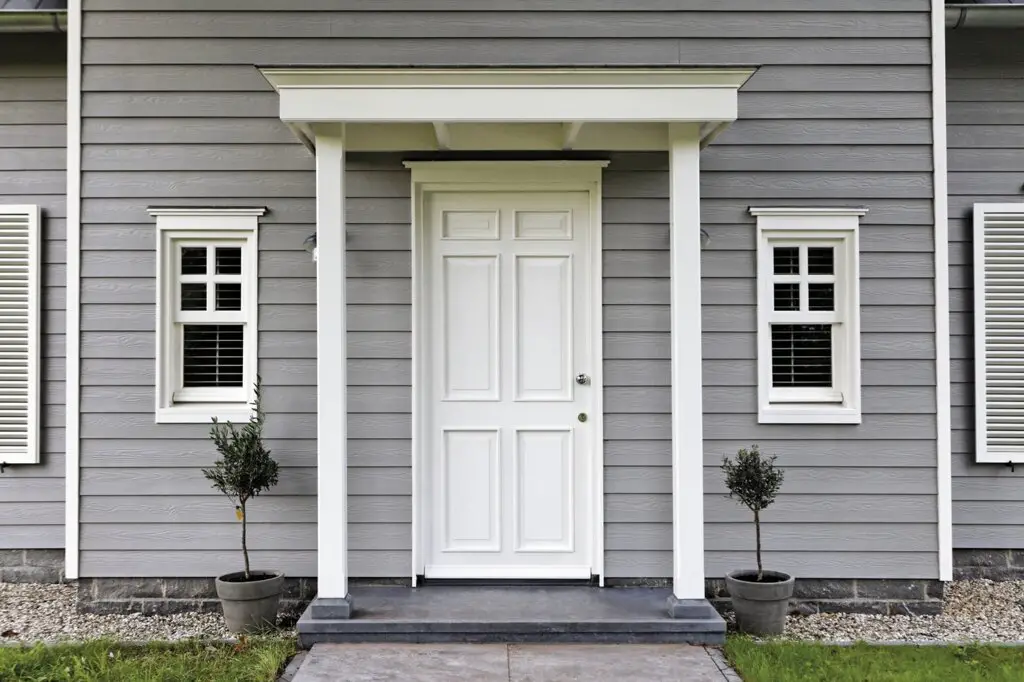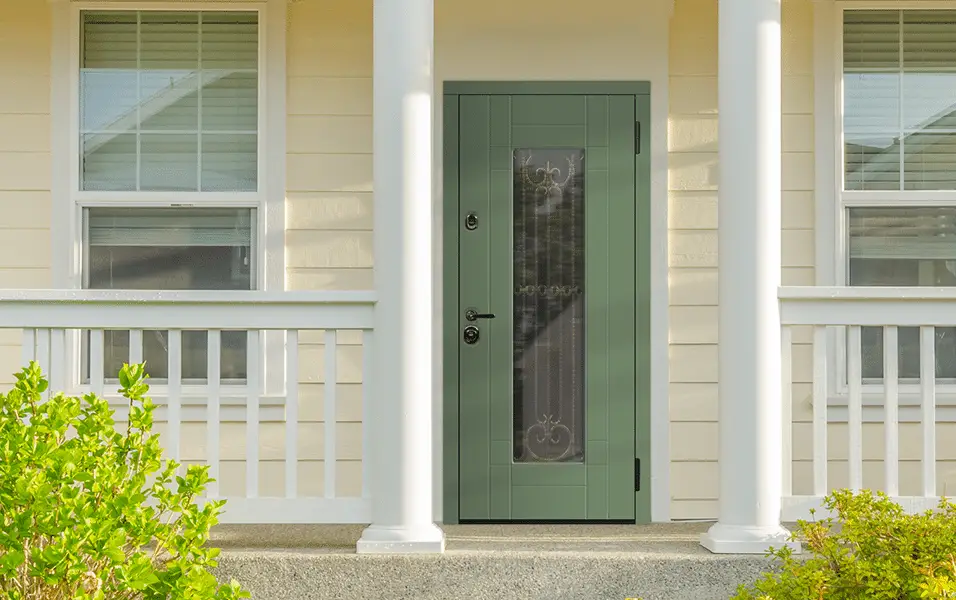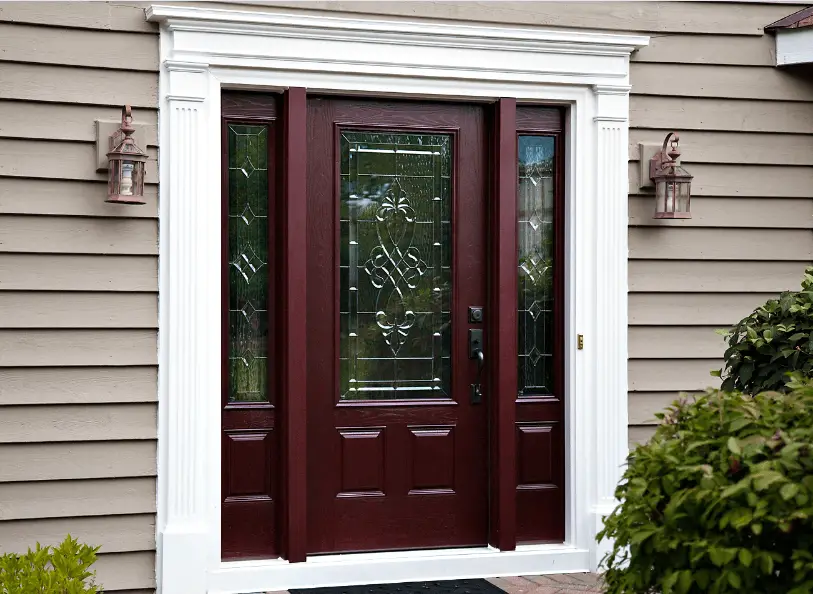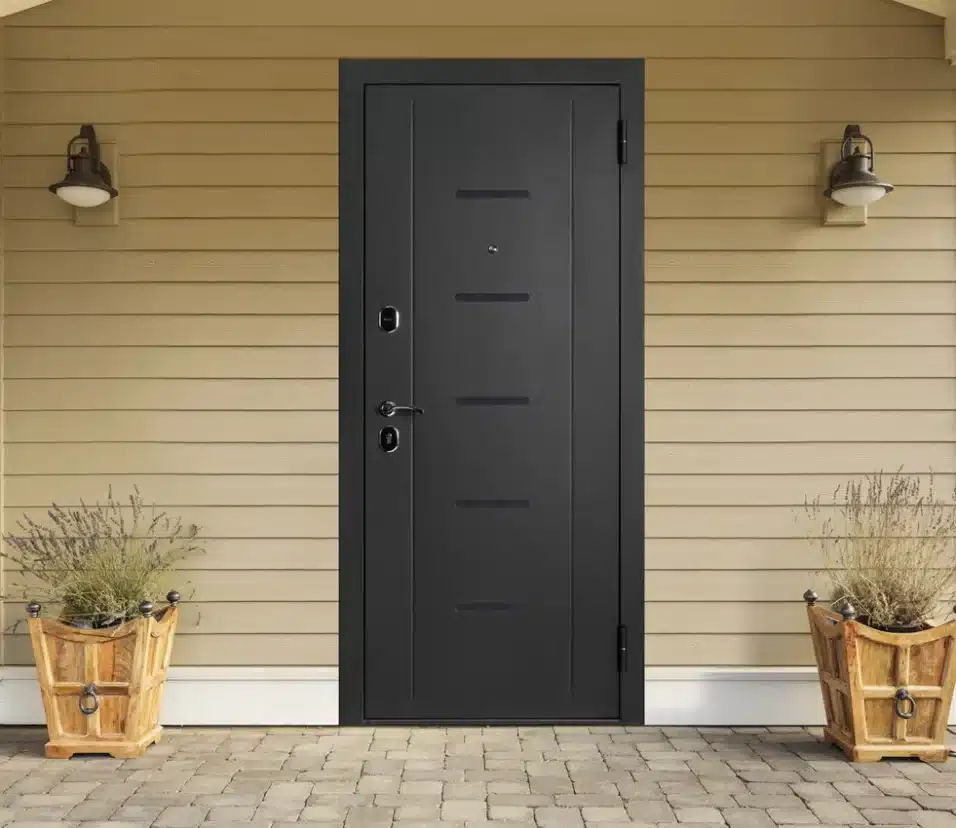How To Keep Exterior Door Frame From Rotting
Introduction
How To Keep Exterior Door Frame From Rotting: The door frame, an often-neglected element, plays a pivotal role in maintaining the structural soundness and aesthetic appeal of your dwelling. In this comprehensive guide, we delve into the strategies, maintenance routines, and preventative measures that will empower you to combat rot and ensure the longevity of your exterior door frame.
The battle against rot is not merely a matter of aesthetics—it’s a safeguard against potential structural damage, compromised security, and increased energy costs. Through a combination of proactive maintenance and judicious material choices, you can fortify your home’s first line of defense against the elements, humidity, and time.
From identifying early signs of rot to selecting rot-resistant materials, and from mastering proper installation techniques to implementing regular upkeep routines, this guide leaves no stone unturned. Whether you’re a seasoned DIY enthusiast or a newcomer to home maintenance, the insights provided will equip you to take charge of your exterior door frame’s condition and thwart the insidious advancement of rot.
Prepare to embark on a journey of preservation and empowerment. Your commitment to learning how to prevent exterior door frame rot will not only enhance your home’s curb appeal but also offer lasting protection and peace of mind.

How do you fix wood rot on an exterior door frame?
A: Short of replacing the whole piece, you have two options for repairing rotten wood: Use an epoxy consolidator and patch material, or replace the damaged pieces with new wood. For the epoxy solution, get a product such as System Three’s EndRot kit ($42.34 at Home Depot).
Fixing wood rot on an exterior door frame is essential to maintain the structural integrity and aesthetics of your home.
Here’s a step-by-step guide on how to tackle this issue:
- Assessment: Begin by thoroughly inspecting the extent of the wood rot. You need to determine if it’s localized or widespread. Look for soft, discolored, or crumbling wood. If the rot is severe or has compromised the frame’s structural integrity, you might need to replace the entire frame.
- Remove Affected Wood: Using a chisel, pry bar, or a rotary tool with a cutting attachment, carefully remove all the rotted wood. Ensure that you go beyond the visible damage to reach solid, healthy wood.
- Treat with Wood Preservative: After removing the damaged wood, treat the remaining wood with a wood preservative or a wood hardener. This helps to strengthen the wood and prevent future rot.
- Fill and Patch: Fill any gaps or voids left by the rotted wood with an epoxy wood filler. This filler should be waterproof and suitable for exterior use. Follow the manufacturer’s instructions for application.
- Sand and Smooth: Once the filler has dried, sand the repaired area until it’s smooth and level with the surrounding wood. This is important for a neat finish.
- Prime and Paint: Apply a high-quality exterior primer to the entire door frame, including the repaired area. After the primer has dried, apply two coats of exterior paint. Make sure to use paint specifically designed for outdoor use, as it provides better protection against moisture.
- Maintain Regularly: To prevent future wood rot, maintain your door frame by keeping it clean and well-painted. Inspect it periodically for any signs of damage, and address any issues promptly.
- Improve Drainage: Ensure that the door frame has proper drainage to divert water away from the wood. This may involve adjusting the angle of the frame or adding weather stripping.
What causes door frames to rot?
Mold, mildew, and fungus growth lead to wood rot, so if your door hasn’t already rotted—it will soon. If you notice any discoloration toward the bottom of your door and frame, this is usually caused by water damage, which can later lead to rotting.
Several factors can contribute to the rotting of exterior door frames:
- Moisture: Moisture is the primary culprit. When water infiltrates the wood due to rain, snow, or humidity, it creates an ideal environment for fungi and bacteria to thrive, leading to rot.
- Lack of Maintenance: Neglecting regular maintenance, such as repainting or sealing the wood, can leave the door frame vulnerable to moisture penetration.
- Improper Installation: If the door frame wasn’t installed correctly, it might not have adequate flashing or sealing to keep out water. Improper installation can also lead to gaps that allow water to seep in.
- Poor Ventilation: Inadequate airflow around the door frame can trap moisture and exacerbate the rotting process.
- Insect Infestation: Certain wood-boring insects, like termites and carpenter ants, can weaken wood, making it more susceptible to rot.
- Exposure to the Elements: Exterior door frames are constantly exposed to harsh weather conditions, which can accelerate the deterioration of wood over time.
How do you keep wood from rotting outside?
Tips for Preventing Wood Rot
Always use decay-resistant or pressure-treated lumber for decks. Wood that touches the ground should be pressure-treated lumber that’s rated for ground contact. When building an exterior project with wood, stain or paint all sides of each lumber piece before assembly.
Preventing wood from rotting outdoors involves proactive measures to minimize moisture exposure and inhibit the growth of fungi and bacteria. Here are some strategies:
- Choose Rot-Resistant Wood: Opt for naturally decay-resistant wood species, such as cedar, redwood, or pressure-treated lumber, for outdoor projects.
- Seal and Paint: Apply a high-quality wood sealer or exterior paint to create a protective barrier against moisture. Ensure you reapply as needed per the manufacturer’s instructions.
- Proper Installation: Ensure that wood is installed correctly, with adequate flashing and sealing to prevent water infiltration.
- Elevate Wood: Keep wood off the ground to prevent moisture absorption from soil. Use concrete blocks or wooden posts to raise it.
- Improve Drainage: Ensure proper drainage away from wooden structures to minimize water exposure.
- Regular Maintenance: Inspect and maintain wood regularly. Replace damaged or rotted sections promptly.
- Keep Vegetation Away: Trim shrubs and trees near wood structures to allow for better air circulation and prevent moisture buildup.
- Treat with Preservatives: Use wood preservatives or sealants that contain fungicides and insecticides to protect against rot and pests.
- Ventilation: Provide adequate airflow around wooden structures to help them dry quickly after rain or humidity.
What is the best sealant for exterior door frame?
For sealing around the exterior of a door, or anywhere that could be exposed to water and harsh weather, choose a GE-branded 100% silicone sealant, like GE Supreme Silicone Window & Door sealant. This sealant is 100% weatherproof, permanently flexible and won’t crack or shrink with temperature changes.
The best sealant for an exterior door frame depends on your specific needs and preferences. However, silicone and polyurethane sealants are commonly used for exterior applications due to their durability and weather resistance.
- Silicone Sealant: Silicone sealants are excellent for outdoor use because they are waterproof and resistant to extreme temperatures. They remain flexible and won’t crack or shrink over time, making them ideal for sealing gaps around door frames.
- Polyurethane Sealant: Polyurethane sealants are known for their durability and adhesion properties. They are also resistant to moisture, UV rays, and temperature fluctuations. Polyurethane sealants provide a strong, long-lasting seal for exterior door frames.
When choosing a sealant, look for one labeled as “exterior” or “weatherproof,” as these are specifically formulated for outdoor use. Additionally, consider the color of the sealant to ensure it complements the door frame’s aesthetics.
How do I protect my exterior door from water damage?
Use a quality exterior-grade caulk (Quality means you may have to pay $7/tube rather than $3/tube but it’s worth every extra dollar!) and add a bead of sealant between the sill and the door frame at the bottom. Also, seal up any cracks you may see around the door frame.
Protecting your exterior door from water damage is essential for maintaining its appearance and structural integrity. Here are some steps you can take:
- Weather Stripping: Ensure that your door has proper weather stripping around the frame. Weather stripping creates a seal that prevents water from seeping in around the edges.
- Thresholds: Install a threshold at the base of the door. This helps to divert water away from the door and keeps it from flowing inside.
- Quality Finish: Apply a high-quality exterior paint or wood stain to your door. Make sure to cover all surfaces, including the top and bottom edges. Reapply the finish as needed to maintain a protective barrier against moisture.
- Seal Gaps: Regularly inspect the door frame for any gaps or cracks. Seal them with a waterproof caulk or sealant to prevent water infiltration.
- Proper Drainage: Ensure that gutters and downspouts are directing rainwater away from the door. Proper drainage prevents water from splashing onto the door and frame.
- Eaves and Awnings: If possible, install eaves or awnings above the door to provide additional protection from rain.
- Regular Maintenance: Periodically inspect your door for signs of wear and damage. Promptly address any issues, such as peeling paint or damaged weather stripping.
- Door Sweeps: Install a door sweep at the bottom of the door to block drafts and prevent water from getting in under the door.
What is the best treatment for exterior wooden doors?
Paint. Because its opaque pigments block the sun’s UV rays, an exterior-grade oil- or water-based paint is the longest-lasting and most-protective finish you can apply. Plus, it comes in eye-catching colors to improve your home’s curb appeal. Sand and reapply every five to six years.
To keep your exterior wooden doors in top condition, you should follow a proper treatment and maintenance routine:
- Cleaning: Regularly clean your wooden door with a mild detergent and water to remove dirt and grime. Rinse thoroughly and allow it to dry completely.
- Sanding: Periodically sand the door’s surface to remove any rough spots, splinters, or old finish that may be peeling. Sand with the grain to maintain a smooth surface.
- Staining or Painting: Apply an exterior wood stain or paint that is designed for outdoor use. These finishes not only enhance the door’s appearance but also protect it from the elements. Be sure to follow the manufacturer’s recommendations for application and maintenance.
- Sealant: Consider applying a clear wood sealant over the stain or paint for added protection. This will help to repel water and protect the wood from UV damage.
- Weather Stripping: Ensure that the weather stripping around the door frame is in good condition and provides a proper seal.
- Regular Maintenance: Inspect the door regularly for any signs of wear, such as cracking or peeling finish. Address any issues promptly to prevent further damage.
- Rot Prevention: To prevent rot, ensure that the door’s bottom edge is properly sealed, and there are no gaps that allow water to infiltrate.
- Hardware Care: Maintain and lubricate the door’s hardware (hinges, locks, handles) to prevent corrosion and ensure smooth operation.
Can a rotted frame be fixed?
Depending on the extent of the rust, it may be beneficial to have the rotted part of the frame replaced. This is done similar to mash damage repair; the affected area is removed and replaced by suitable grade steel which is welded in place.
Yes, a rotted door frame can be fixed, but the extent of the repair will depend on the severity of the rot. Here are the general steps for fixing a rotted door frame:
- Assessment: Examine the extent of the rot to determine how much of the frame needs repair. If the damage is extensive or affects the structural integrity, it may be necessary to replace the entire frame.
- Remove Rotted Wood: Using tools like chisels, pry bars, or a rotary tool with a cutting attachment, carefully remove all the rotted wood until you reach solid, healthy wood.
- Treat with Wood Preservative: Treat the remaining wood with a wood preservative or wood hardener to strengthen it and prevent future rot.
- Fill and Patch: Fill any gaps or voids left by the removed wood with an epoxy wood filler designed for exterior use. Follow the manufacturer’s instructions for application.
- Sand and Smooth: After the filler has dried, sand the repaired area until it’s smooth and level with the surrounding wood.
- Prime and Paint: Apply a high-quality exterior primer to the entire door frame, including the repaired area. After the primer has dried, apply two coats of exterior paint for protection against moisture.
- Regular Maintenance: To prevent future wood rot, maintain your door frame by keeping it clean, well-painted, and inspecting it periodically for any signs of damage.
Keep in mind that for extensive rot or structural issues, it’s best to consult a professional carpenter or contractor for a thorough assessment and repair.
How do you fix rotted framing?
You can repair rotten wood by first removing the rotting from the original board or joists. You can then fill the surrounding area with a soft wood polyester filler or wood patch using a plastic putty knife. This material fills the area and cures to ensure strength and resilience.
Fixing rotted framing in your home involves a similar process to repairing a rotted door frame but on a larger scale.
Here’s a general guide:
- Safety Precautions: Start by ensuring your safety. Wear appropriate personal protective equipment, such as gloves and a dust mask, especially if the rot is extensive.
- Assessment: Identify the areas of the framing that are affected by rot. Determine the extent of the damage and whether it has compromised the structural integrity of your home.
- Remove Rotted Wood: Using appropriate tools like reciprocating saws or chisels, carefully remove all the rotted wood until you reach sound and healthy wood.
- Treat with Preservative: Treat the remaining wood with a wood preservative or wood hardener to prevent further deterioration.
- Repair or Replace: Depending on the extent of the rot, you may need to repair or replace sections of the framing. Larger or severely damaged sections may require complete replacement.
- Reinforcement: If necessary, reinforce the framing with additional support, such as steel brackets or framing connectors, to ensure structural integrity.
- Sealing and Weatherproofing: Seal any gaps or joints in the repaired or replaced framing with an appropriate sealant to prevent moisture intrusion. Ensure that your home’s weather barrier (such as house wrap) is intact and properly installed.
- Rebuild and Finish: Rebuild the wall or structure as needed, following local building codes and best practices. Finish the repaired or replaced framing with insulation and exterior cladding, such as siding.
- Regular Inspection and Maintenance: After repairs are complete, establish a routine for inspecting and maintaining the framing and the exterior of your home to prevent future rot.
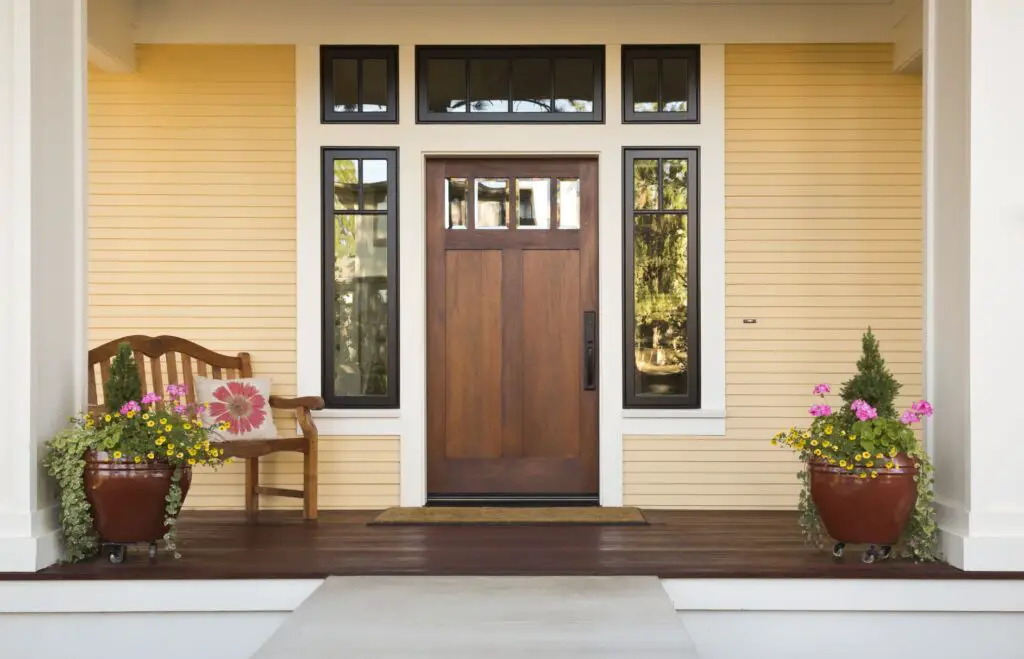
Conclusion
After reading this comprehensive guide on protecting your outside door frame from rot, you’ll have the knowledge and resources to strengthen your home’s defenses. Your preventative actions and knowledgeable upkeep show your dedication to preserving your home’s appearance and structure.
The strategies you’ve learned, from identifying vulnerable areas to implementing rot-resistant materials and diligent upkeep, are investments in the longevity of your home. By consistently monitoring your door frame and addressing potential issues promptly, you’re actively thwarting the progression of rot and its detrimental effects.
Remember that the battle against rot is ongoing. As seasons change and weather fluctuates, continue to implement the practices you’ve acquired to ensure that your exterior door frame remains a resilient barrier against the elements. Your efforts not only contribute to your home’s overall well-being but also reflect your commitment to maintaining a secure and aesthetically pleasing living space.
Thank you for joining us on this journey of preservation and empowerment.



